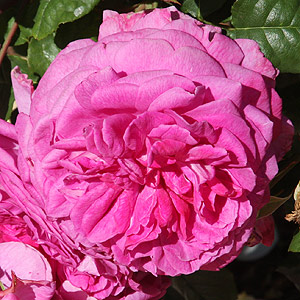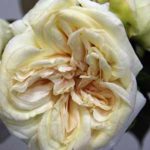
Perhaps the best known of all roses, David Austin roses have a part of the landscape since the 1960s.
If you are thinking you might like grow them all, then you will need a larger garden than ours, with over 900 varieties it is more a matter of choosing the best for your garden.
Famous for the repeat flowering varieties, it was Constance Spry introduced in 1969 that started things, however this was not a repeat variety.
For our garden it was the rather vigorous David Austin rose, ‘Graham Thomas’ that started things. And we must admit when we planted it, after two years we thought we had made a mistake.
Its not a climber as such, however it grew much larger than was appropriate for where we planted it. We pruned it back and shifted it to a position against a wall. Room to move, and has thrived ever since. As for pruning, it seems to cope with whatever we throw at it.
The yellow flowering ‘Graham Thomas’ was quickly joined by the wonderful pink flowering ‘Gertude Jekyll’. Named after the garden designer who worked in the USA as well as the UK and Europe, the rose is as prolific as her garden creations, and maybe as famous.
One of the best is Eglantyne, a little more restrained in growth, masses of flowers with a classic sweet fragrance.
In the USA it depends a little on the climate zone as to where to grow these English bred roses. In warmer climates they will need some extra shade and extra water. In cooler zones they will be happy in full sun to light afternoon shade.
Growing David Austin Roses

In the USA it depends a little on the climate zone as to where to grow these English bred roses. In warmer climates they will need some extra shade and extra water. In cooler zones they will be happy in full sun to light afternoon shade.
You will also find that vigor will vary depending on climate zone. Graham Thomas is a classic example, in the colder zones it will not reach the lofty heights that it does in cooler areas. The same applies to soil conditions and position.
Some varieties are better suited to the colder areas as well. So a little homework on variety before you plant will stand you in good stead.
Best Varieties

The choice will depend on your preferences in terms of colour and vigor. You may want a vigorous climber, or you may want something a little more restrained in growth habit. However over the years these varieties have worked well. So Young Lycidas, pictured right will work from Zones 5 through to 9, as will many, at the ends of the scale, try these.
For colder zones (USDA 4 – 5) you could try Gertrude Jekyll excellent pink flowers with a good fragrance, Golden Celebration with deep golden yellow flowers, Eglantyne with its beautiful soft pink flowers and the wonderful Mary Rose, a classic lipstick pink.’ The vigorous Graham Thomas will also work well in colder zones.
In the warmer zones (USDA 9 – 10) again we do like Mary Rose, you can add in Darcey Bussell with its crimson red flowers. Abraham Darby, apricot pink with a good fragrance, Molineux with its golden yellow flowers and Jude the Obscure.
You may also like
- Black Roses
- Best Roses
- Cut Rose Care
- Floribunda Roses
- Heritage Roses
- Knockout Rose Care
- Rose Diseases
- Rose Flowers
- Rosa sericea pteracantha
- Top Ten Roses

